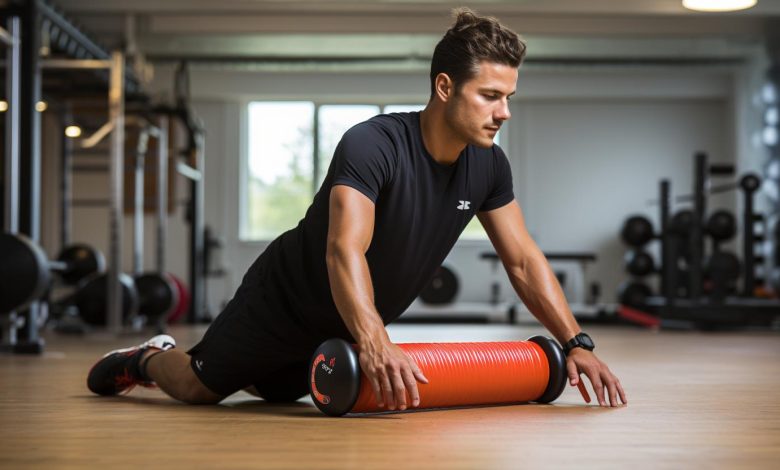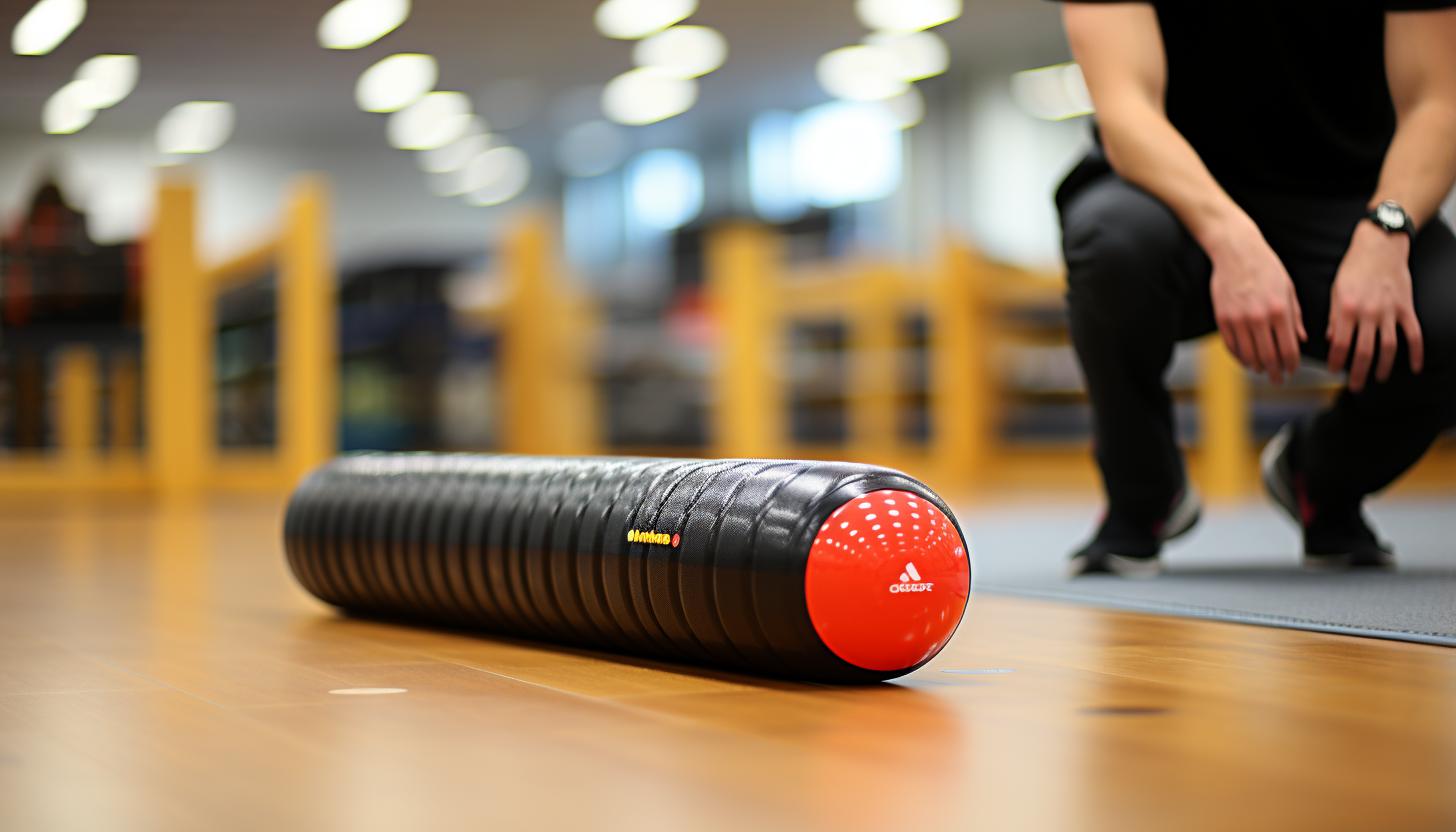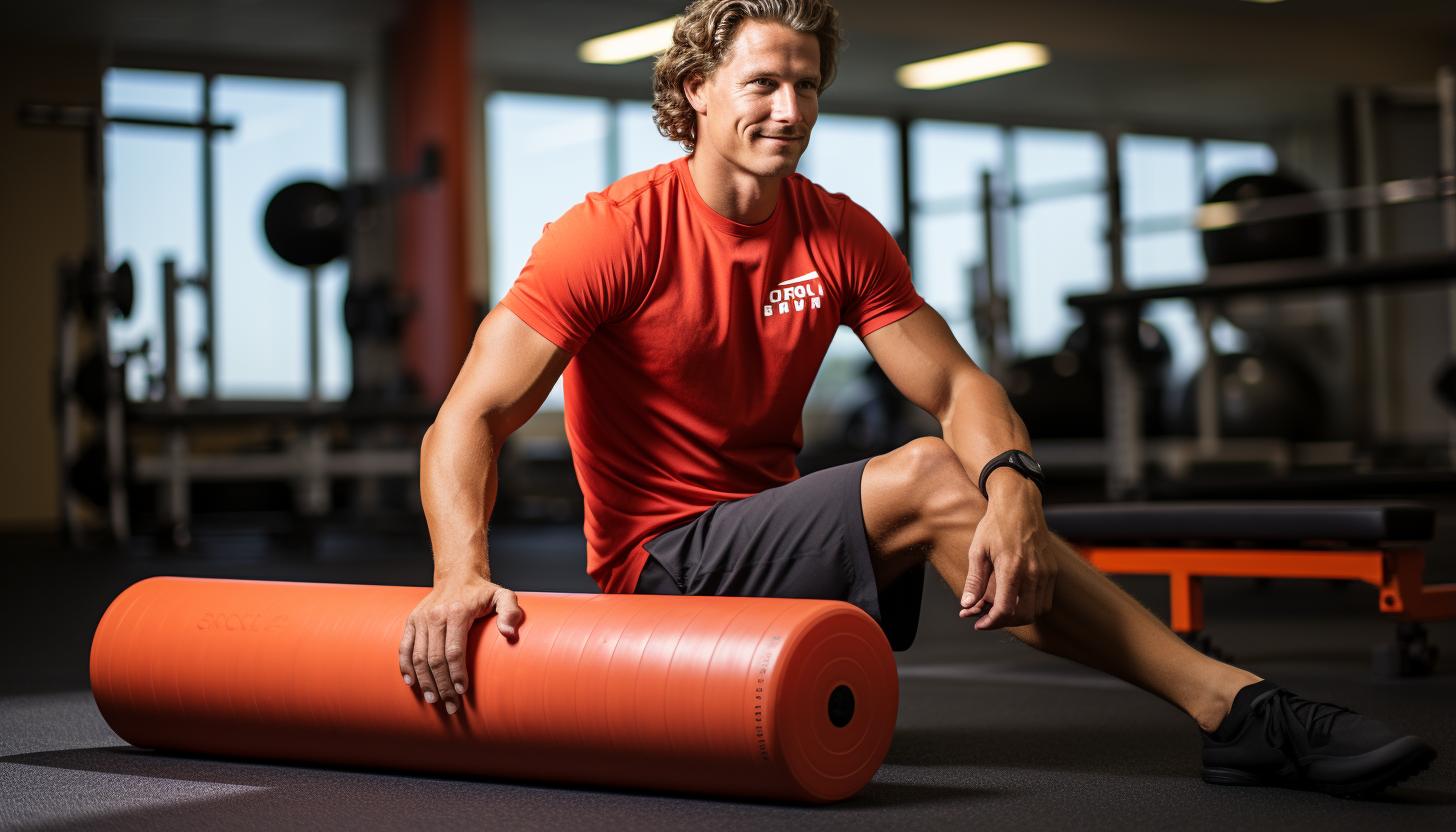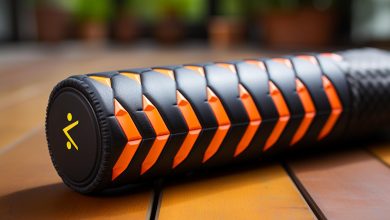The Best Foam Rolling Techniques for IT Band Tightness

Are you tired of the constant discomfort and limited mobility caused by IT band tightness? Look no further! We’ve got the ultimate solution for you: the best foam rolling techniques.
This article will guide you through a series of simple yet effective exercises that will provide immediate relief and help loosen up those stubborn IT bands. Get ready to say goodbye to stiffness and hello to freedom of movement with these game-changing foam rolling methods.
Let’s roll!
Understanding IT Band Tightness

Understanding IT band tightness can help you effectively treat and prevent discomfort. The iliotibial (IT) band is a thick band of connective tissue that runs along the outside of your thigh, from your hip to your knee. When this band becomes tight and inflamed, it can cause pain and discomfort during physical activity.
The main causes of IT band tightness are overuse and muscle imbalances. Activities such as running or cycling, which involve repetitive movements of the legs, can put strain on the IT band and lead to tightness. Additionally, weak hip muscles or an imbalance between the strength of your quadriceps and hamstrings can contribute to this condition.
Fortunately, there are several treatment options for IT band tightness. Resting and avoiding activities that aggravate the condition is crucial in allowing the inflammation to subside. Applying ice to the affected area can also help reduce swelling. Physical therapy exercises targeting hip strengthening and stretching can be beneficial in alleviating tension in the IT band. In some cases, anti-inflammatory medications may be prescribed by a healthcare professional.
Transitioning into the subsequent section about the benefits of foam rolling for IT band tightness, incorporating foam rolling into your routine has been shown to provide relief for IT band tightness by reducing tension in the connective tissue.
The Benefits of Foam Rolling for IT Band Tightness

The benefits of foam rolling for the IT band include reducing pain and improving flexibility. Foam rolling is a popular technique used by athletes, fitness enthusiasts, and physical therapists to prevent and alleviate IT band tightness.
Here are some reasons why foam rolling is beneficial for your IT band:
– Breaks up fascial adhesions: Foam rolling helps break up fascial adhesions that can develop in the IT band due to repetitive movements or overuse. By applying pressure to these adhesions, you can release tension and restore normal function.
– Increases blood flow: Foam rolling stimulates blood flow to the IT band, promoting healing and reducing inflammation. This increased circulation also delivers necessary nutrients and oxygen to the affected area.
– Enhances range of motion: Regular foam rolling can improve your IT band’s flexibility, allowing for better range of motion during activities such as running or cycling. This can help prevent injuries caused by restricted movement.
– Relieves muscle soreness: Foam rolling not only targets the IT band but also activates surrounding muscles. This can help relieve muscle soreness and tightness commonly associated with IT band issues.
Preparing for Foam Rolling: Warm-up Exercises

Before starting your foam rolling routine, it’s important to warm up with some exercises. Dynamic stretches and mobility exercises are key components of a proper warm-up that can help prepare your muscles for the foam rolling session.
Dynamic stretches involve actively moving through a range of motion, which helps increase blood flow and flexibility in the targeted muscles. Some examples of dynamic stretches include leg swings, walking lunges, high knees, and arm circles. These movements not only loosen up the muscles but also activate them, promoting better muscle function during foam rolling.
Mobility exercises focus on improving joint range of motion and stability. They can include movements like hip circles, shoulder rotations, and ankle rolls. These exercises help increase joint mobility and reduce any stiffness or tightness that may hinder your foam rolling session.
By incorporating dynamic stretches and mobility exercises into your warm-up routine before foam rolling, you can enhance the effectiveness of your session. Properly preparing your body will allow you to target specific areas more efficiently and promote better overall muscle recovery.
Remember to always listen to your body during warm-ups and adjust accordingly. Start with gentle movements and gradually increase intensity as you feel comfortable.
Foam Rolling Techniques for IT Band Release

To release your IT band, start by positioning yourself on your side with the foam roller placed under your hip. This technique effectively targets the iliotibial (IT) band, a long tendon that runs along the outside of your thigh from your hip to your knee.
Here are some tips to help you effectively release tension in this area:
– Apply downward pressure: Once you’re in position, use your arms and legs to control the amount of pressure applied to the foam roller. Start by applying gentle pressure and gradually increase it as needed.
– Roll slowly: Slowly roll along the length of your IT band, from just below your hip to just above your knee. Take note of any areas that feel particularly tight or tender and spend extra time on those spots.
– Use additional equipment: If you find that a traditional foam roller doesn’t provide enough pressure for you, consider using a denser foam roller or even a massage ball to target specific areas more intensely.
– Explore other muscle groups: Don’t limit yourself to just rolling out the IT band. Foam rolling can be used for other muscle groups as well, such as quadriceps, hamstrings, calves, and glutes.
Incorporating foam rolling into your recovery routine can help alleviate muscle tension and improve overall flexibility.
Incorporating Foam Rolling Into Your Recovery Routine

When incorporating foam rolling into your recovery routine, remember to target multiple muscle groups for maximum benefit. Foam rolling is a self-myofascial release technique that can help improve flexibility, reduce muscle soreness, and enhance overall performance. By applying pressure to specific areas of the body using a foam roller, you can effectively release tension and adhesions in the muscles and fascia.
One of the key benefits of foam rolling is its ability to increase blood flow to the targeted muscles. This increased circulation helps deliver oxygen and nutrients to the tissues, promoting faster recovery and reducing inflammation. Additionally, foam rolling can improve range of motion by breaking up scar tissue and adhesions that may be limiting movement.
To incorporate foam rolling into your recovery routine, start by identifying the muscle groups that need attention. Common areas include the calves, hamstrings, quadriceps, glutes, IT band, and back muscles. Begin with gentle pressure on each muscle group and gradually increase intensity as tolerated. Spend about 30 seconds on each area or until you feel a release of tension.
Remember to breathe deeply throughout the process and avoid placing direct pressure on bones or joints. Incorporating foam rolling into your recovery routine can be an effective way to relieve muscle tightness and improve overall mobility.
Conclusion
In conclusion, incorporating foam rolling into your recovery routine can be immensely beneficial for relieving IT band tightness. By understanding the causes of IT band tightness and the benefits of foam rolling, you can effectively target and release tension in this area.
Remember to warm up before starting your foam rolling session, and use proper techniques to ensure maximum effectiveness. As the saying goes, “An ounce of prevention is worth a pound of cure.” So take care of your body and give foam rolling a try to keep your IT band happy and healthy.






